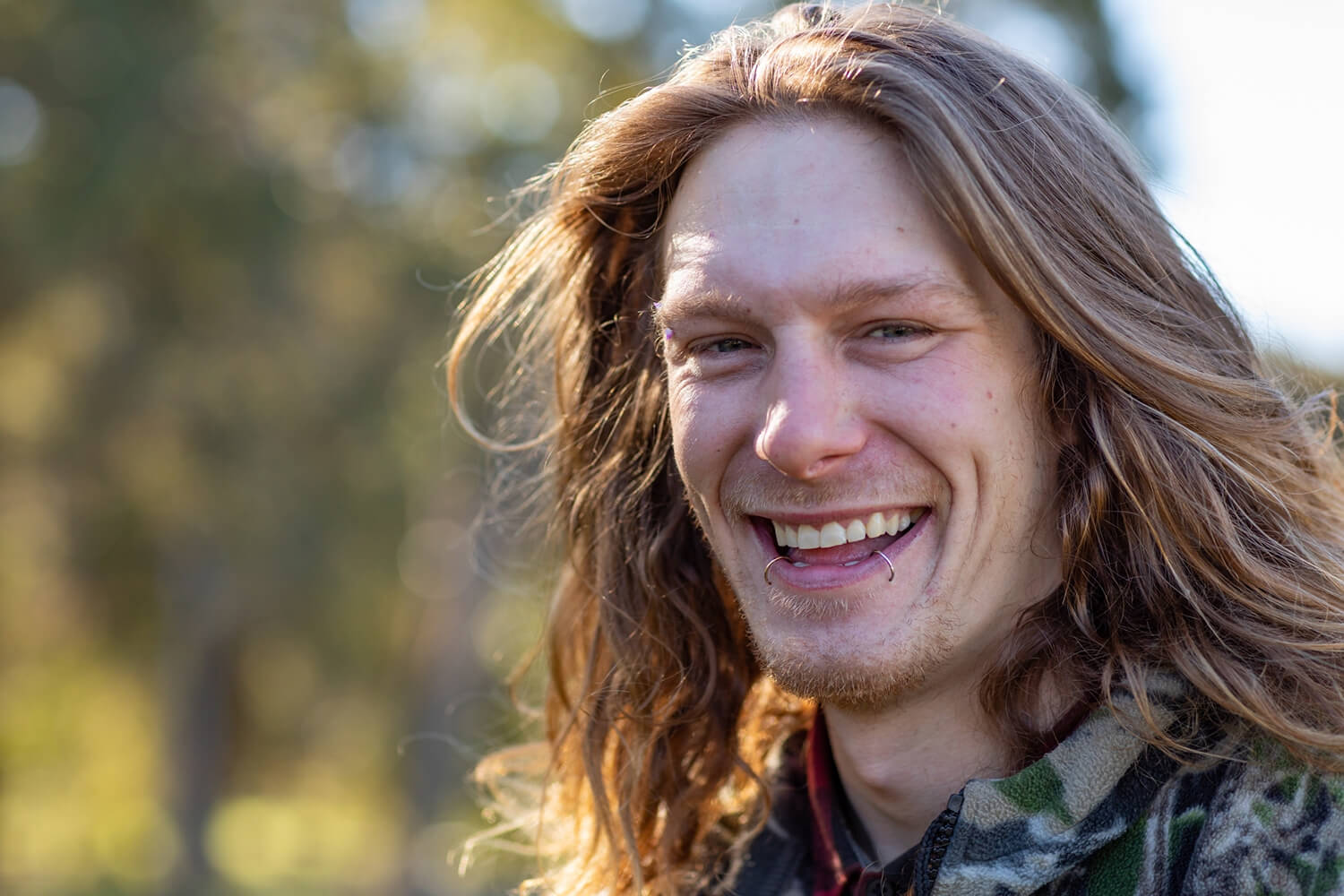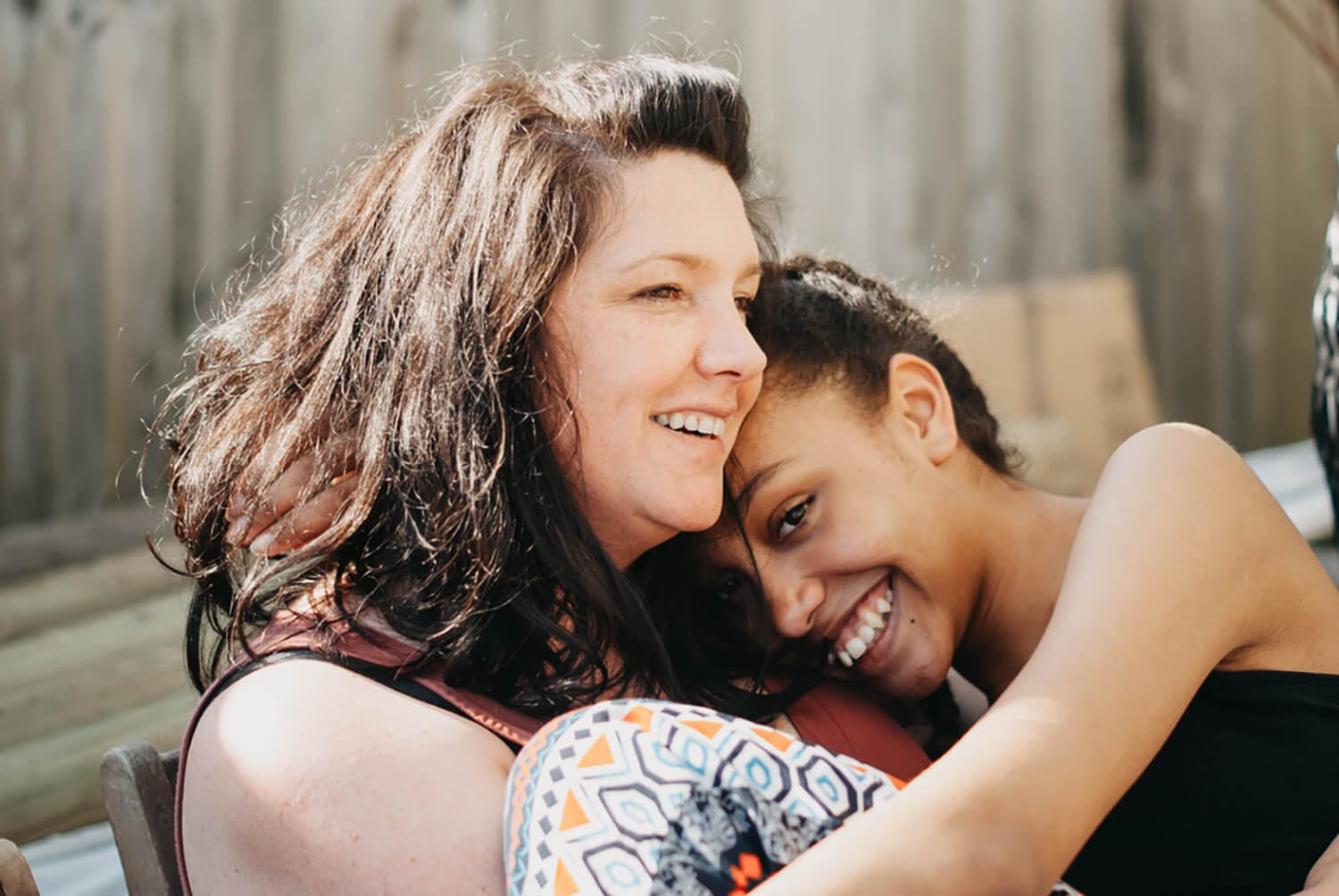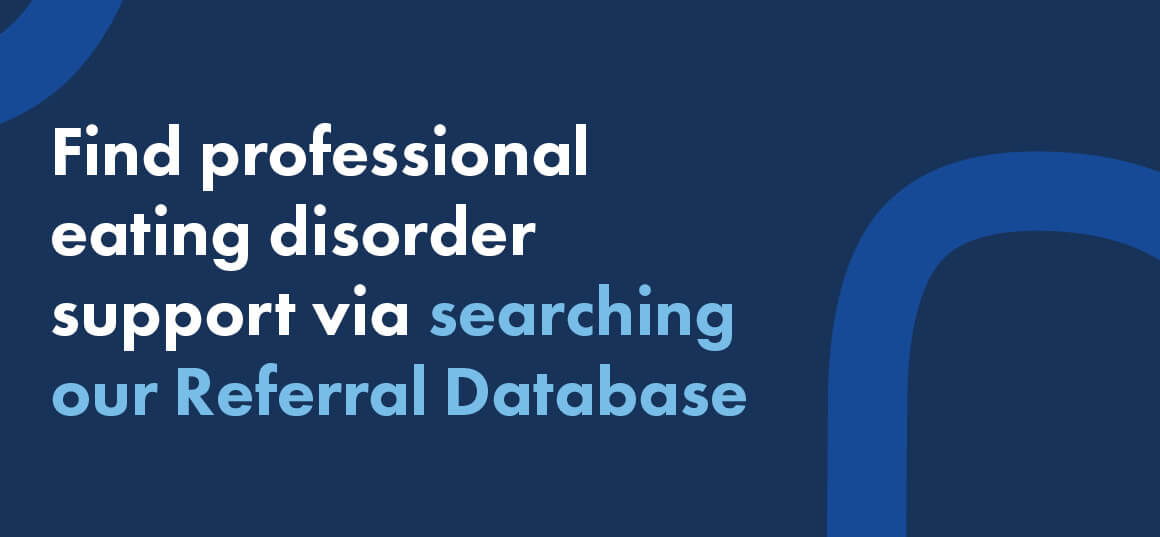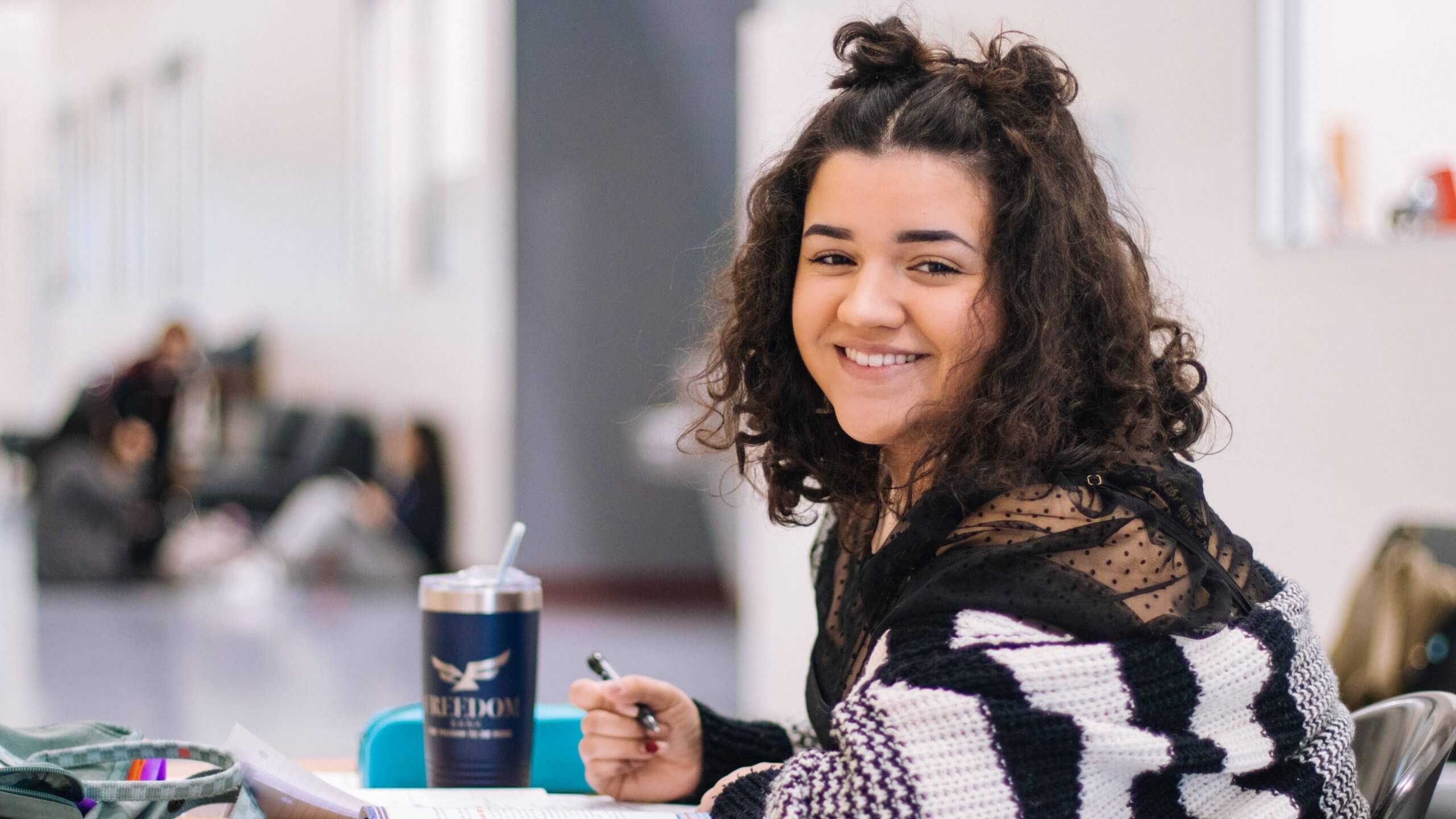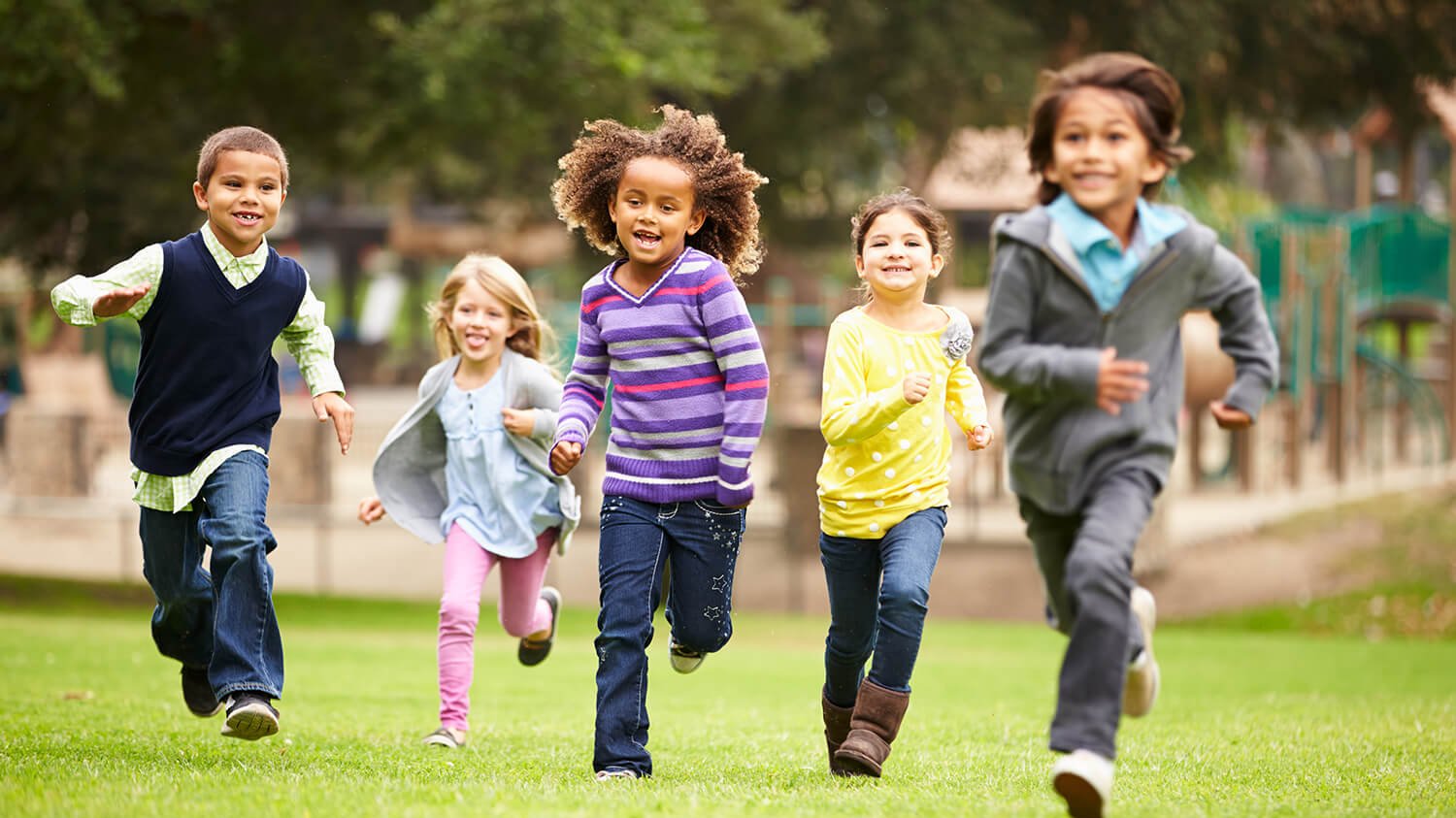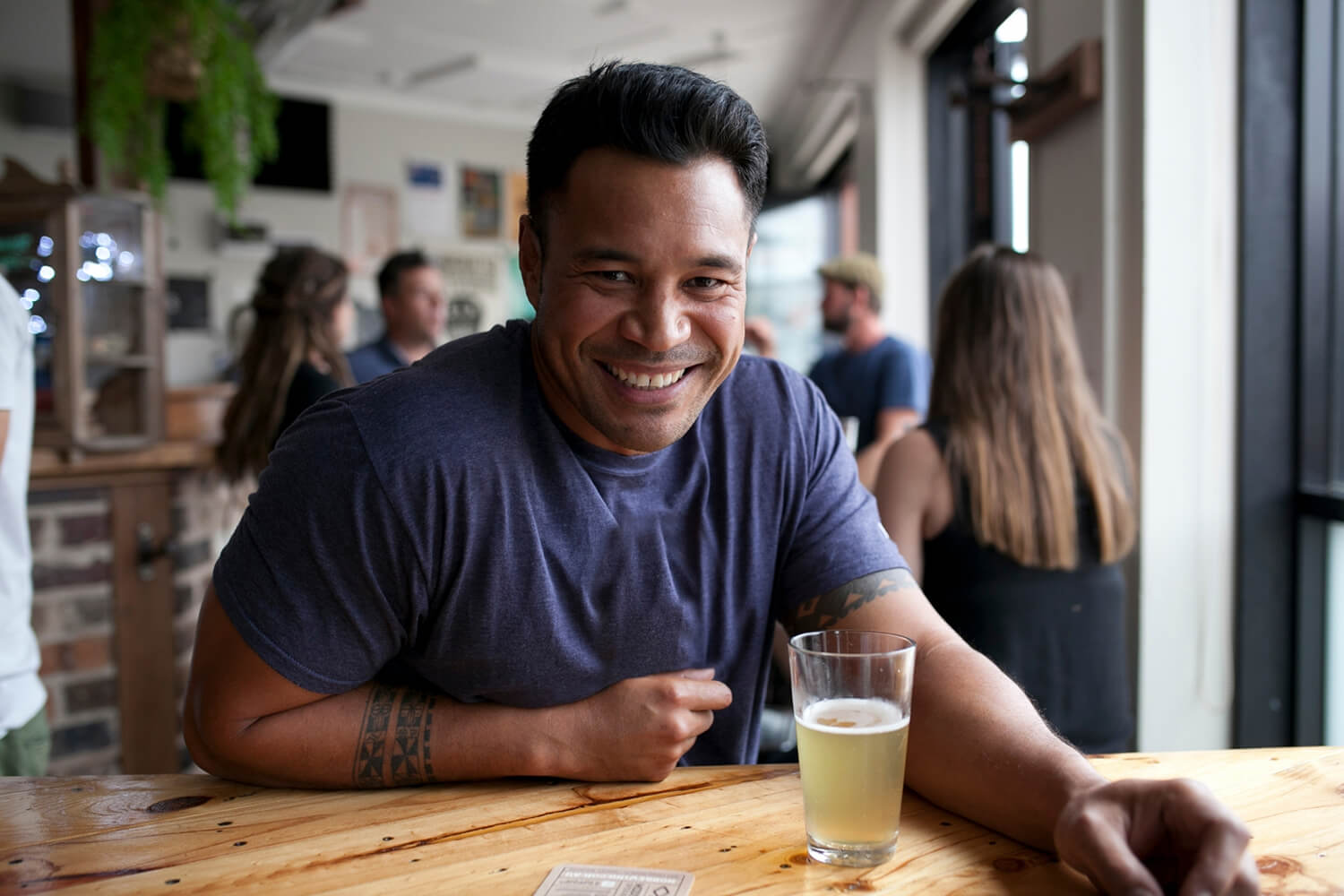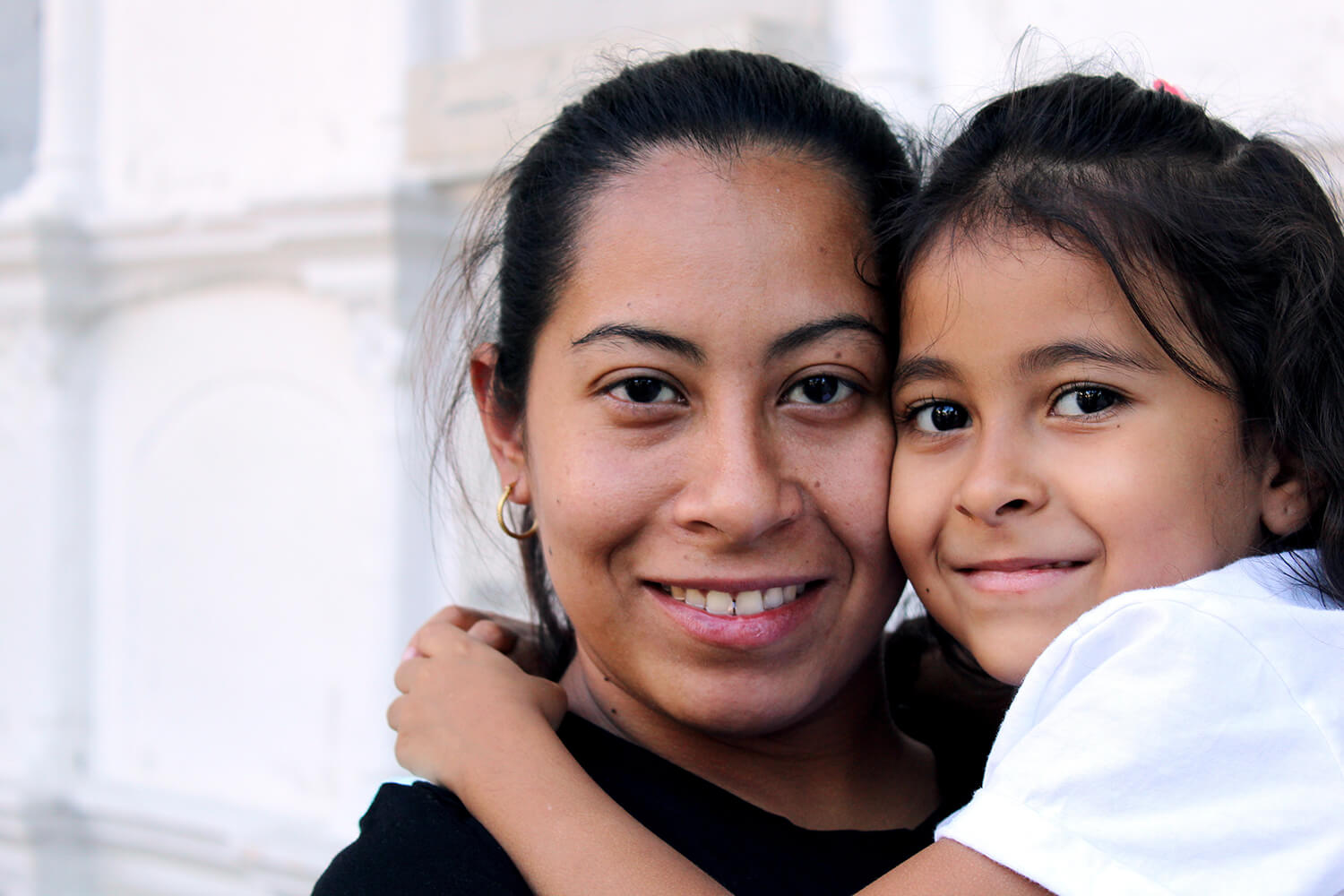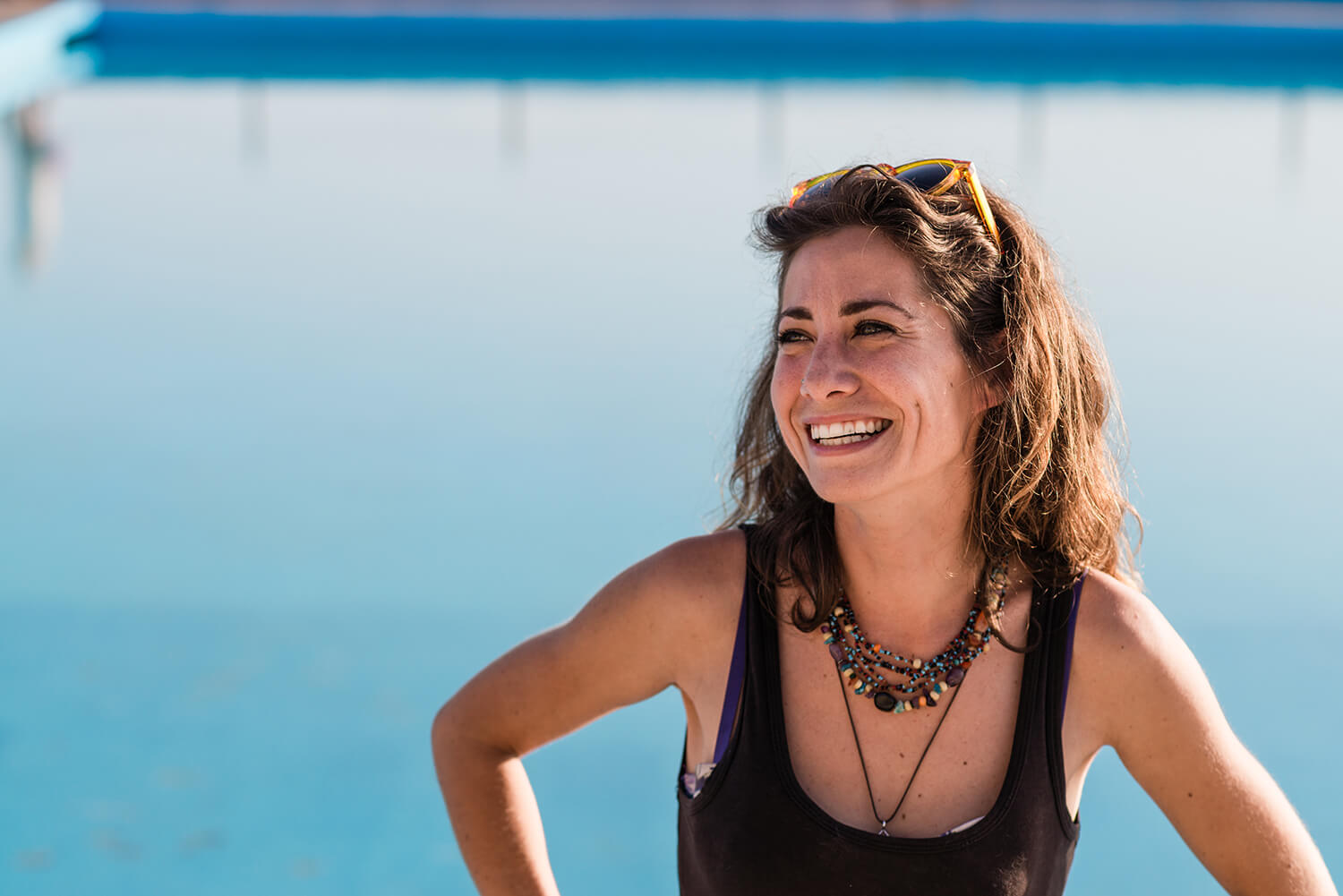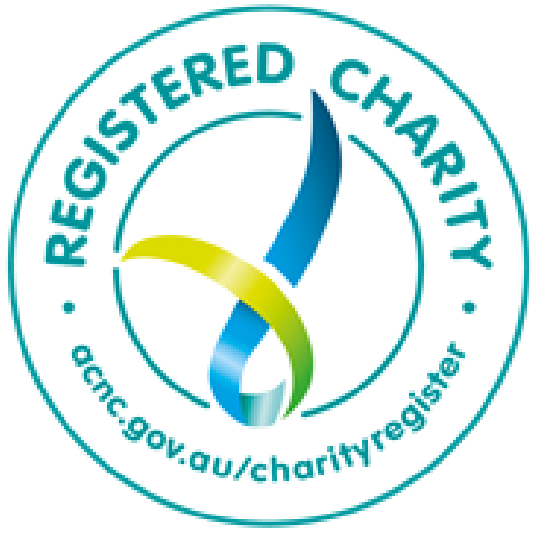Sports and eating disorders – what’s the connection?
High-performance athletes are Australia’s version of royalty. They do superhuman things and adoring fans hail them as heroes, but off the field, they’re human beings. And like all human beings, they are susceptible to body image issues and eating disorders. In fact, many athletes are at much higher risk of disordered eating and eating disorders due to the intense pressures and expectations placed upon them.
In this episode, we talk to Australian Paralympian swimmer Jessica Smith, National Basketball star Maddie Garrick and high school athlete Ben Sanders who all struggled with body image and eating issues that not only impacted their lives, but their performance as well.
We also hear from the Australian Institute of Sport lead nutritionist, Nikki Jeacocke and prominent sports nutritionist Fiona Sutherland about how a new set of guidelines for sporting organisations is helping create a safe culture for athletes and much-need support for those at risk. Let’s talk.
Nikki Jeacocke:
… and they do superhuman things, but athletes are human beings, and that’s really important that we remember that.
Jessica Smith:
It was agonizingly painful to get to a point in my life where I realized that in order to continue living, I had to give up the one thing that meant so much to me, and that was swimming.
Fiona Sutherland:
Prevention and early intervention in sport is the biggest step that we really have to take.
Maddie Garrick:
I couldn’t do the things that I was able to do. I was working harder, and I was training more, and I couldn’t understand why I wasn’t getting better.
Ben Sanders:
And I was like, “This isn’t healthy. This isn’t putting me in a good position to succeed.”
Sam Ikin:
Everyone knows how important sport is to Australian culture. We’re a sports-mad country, and that’ll never change. In the UK, they’ve got the Royal family. In the United States, movie stars play the part of royalty, and you could argue that Australian royalty are our top-level athletes.
Jessica Smith:
The demand and the pressure on athletes to look a certain way or to be a certain weight or shape. I think we need to really educate ourselves about that a lot more.
Sam Ikin:
For Australian athletes, it’s a high-pressure situation where their bodies are being pushed to go faster, higher, and stronger. It’s a situation that can make them particularly vulnerable to disordered eating, and in turn, eating disorders. This is the Butterfly Podcast from your friends at Butterfly. Your national voice for eating disorders and body image issues. I’m Sam Ikin.
Nikki Jeacocke:
Athletes are human beings, and so humans have risk factors for developing eating disorders. So our athletes are the same. There are then sports-specific risk factors that can exist on top of what the general population might be experiencing as a risk factor. My name is Nikki Jeacock, I’m a senior sports dietitian and disordered eating project lead at the Australian Institute of Sport. Eating disorders occur in the Australian population, and sport is a microcosm of our society. So yes, we see eating disorders in athletes. Prevalence data will often show that there is a higher incidence in athletes than general population match controls. And in saying that, disordered eating and eating disorders can occur in any athlete in any sport at any time.
Sam Ikin:
The psychological traits that are associated with eating disorders. And we’ve spoken about them a lot on this show. Things like perfectionism, self-disciplined, self-motivation, and high achievement. The thing is, all of those traits are commonly found in people who succeed in sports.
Jessica Smith:
Making the team was obviously the highlight of my career. I was so, so excited. Everything that I had worked for had become a reality. And I remember telling myself, “If I make the team, then I don’t have to starve myself anymore. I don’t have to go into that binge-purge cycle.” But of course, as anyone in this same experience will know that the goalposts then just moved. And I said to myself, “Well, now that I am an elite athlete, I have to make sure I look like an elite athlete. I have to make sure that I am even more stringent, even more demanding when it comes to what I was eating and how I was exercising.”
Sam Ikin:
This is Jessica Smith. She’s a former Australian Olympic swimmer who represented her country for seven years.
Jessica Smith:
Unfortunately, I was forced into early retirement due to a struggle with eating disorders.
Fiona Sutherland:
Often things move much more slowly than we would wish. And certainly, in the sporting space, what tends to happen is that athletes then become coaches and other support staff. And so the culture and the beliefs and attitudes can become quite deeply embedded within a certain club or an organization.
Sam Ikin:
This is Fiona Sutherland from the Mindful Dietitian.
Fiona Sutherland:
I am director of the nutrition program at the Australian Ballet School.
Sam Ikin:
Fiona Sutherland works mostly with high-end dancers who were technically artists rather than athletes. At least that’s what they’ll tell you.
Fiona Sutherland:
So that is a name that some dancers don’t like. They would prefer to be called artists or dancers as opposed to athletes. From a sports science perspective and from a nutrition perspective, I suppose it could be said that I see them very much as athletes.
Sam Ikin:
Fiona says the research that she’s seen tells us that the blanket statement that athletes are more at risk of eating disorders isn’t necessarily true. However, there are certain types of sport that do pose a higher risk.
Fiona Sutherland:
Although it is kind of a [inaudible 00:05:13] belief that athletes are more at risk of eating disorders, it’s actually not born out in the research. Although it could be said that particular sports, so for example, weight [inaudible 00:05:23] sports or aesthetic sports, it seems as though the literature is revealing that those kind of sports are, or do put an athlete more at risk of engaging in disordered eating, which may become more of a [inaudible 00:05:40] disorder.
Sam Ikin:
Research from the National Eating Disorder Collaboration or the NEDC tells us that athletes who believe their performance is directly affected by their body type often experience body dissatisfaction. And that can lead to disordered eating, which in turn can lead to eating disorders. Athletes like bodybuilders, wrestlers boxes, jockeys, and rowers, aesthetic sports, which focus on appearance, figure skating, dancing, diving, and gymnastics, for example, and endurance sports, which focus on individual performance rather than the entire team sports like track and field cycling and swimming at particularly at.
Fiona Sutherland:
So I think one thing that’s really important for parents and families and athletes and active people to know is that it’s not necessarily the sport itself, but it’s sometimes the way that the cultures are set up and the expectations around weight, shape, and size. So it’s rather than blaming the sport or blaming coaches or individuals. It’s about us taking the time to examine what are the pervasive beliefs that exist within particular sporting cultures, which lead people to engage in behaviors, which might be unsafe for them.
Sam Ikin:
For athletes, body weight and size are more likely to be blamed and criticized for poor performance, both by trainers and the athletes themselves. In reality, however, disordered eating and eating disorders are more likely to negatively impact performance. And that’s a story that played out in real life with devastating impact for Australian Paralympian Jessica Smith.
Jessica Smith:
I was actually born missing my left arm, and to this day, doctors have no explanation as to why that occurred. And so I think for me growing up, I was really grappling with my identity and my place in the world. I was told by everyone around me, by doctors and professionals that I was different, that I had a disability. And a lot of the labels that were being used to describe me have so many negative connotations. And for a young child, I remember feeling as though I didn’t want to be limited by what other people were saying or by the way that my body looked. And so, for me, I realized I had an opportunity to show people and to prove to myself that my body could do amazing things. And so the natural progression for me was obviously to go into sport. It’s something that I fell in love with. I really enjoyed being in the water.
Jessica Smith:
I had this sense of freedom and power, even from a very young age. And I think there was obviously a bit of natural talent there, which helps build that level of self-confidence. But it was my first swimming race when I was 10, at the school swimming carnival. And it was a 50 meters freestyle, and I won, beating all the girls and boys with two arms. I grew up in country, New South Wales, in Grafton on the far north coast. So there was no other kids in the school [crosstalk 00:08:38]-
Sam Ikin:
Awesome. I love that story.
Jessica Smith:
Yeah. So it sort of in that moment, I remember thinking, “Wow, people are looking at me finally for something that I can do rather than something that I can’t do.” And the elation and the excitement that I felt in that moment only at 10 years old, I remember it so vividly. And I said to my mum and dad, “I need to swim. I want to swim because it makes me feel good.”
Jessica Smith:
Also, I was just a teenage girl growing up in a world where we emphasize so much on beauty and aesthetics and appearance. And so while I was navigating my world in the pool and as a swimmer and achieving great things, I was then also coming to terms with the fact that I was going through puberty, and I was this teenage girl who did look different. And so I wasn’t getting the attention of boys at high school. I remember one guy even saying, “That girl Jess would be pretty if she had two arms.” And so feeling like I just was too different in my space. And so it was really, really hard to then try and combat the negativity that then started to encroach in my internal dialogue. I looked in the mirror and realized that my arm was never going to grow back. And I also have profound scarring on my neck and chest from an accident when I was a toddler.
Jessica Smith:
A lot going on in that childhood years, in teenage years as well. And so for me, I did. I started to diet, and I started to look at ways in which I could lose weight. And unfortunately for me, that was the beginning of basically a decade living in the hellish nightmare of anorexia and bulimia. And like many athletes can relate to what people see on the outside is completely different from what’s going on on the inside and the shame and guilt that accompanies an eating disorder. And that insidious mental illness meant that I didn’t feel that I could speak up and share what was actually going on with anyone around me. So incredibly lonely. I felt the pressure as well, that perhaps because I was already living with a disability, I therefore didn’t have the right to have any other issues to complain about.
Sam Ikin:
So after overcoming so much adversity to make the Australian Paralympic team and get selected to go to Athens in 2004, the eating disorder that she’d been hiding for so long, stole her dream from her.
Jessica Smith:
As Athens got closer and closer, I became sicker and sicker. And I remember landing in Greece and feeling so excited. But just terrified at the same time because it was as if I knew that my body physically and emotionally was under so much pressure.
Jessica Smith:
I was expected to Medal in Athens, but I was the only member of the Australian team who didn’t make a final. And that’s been very, very hard for me to verbalize for almost seven years when I worked as a motivational speaker I didn’t share that with anybody because the guilt and the shame was still far too heavy for me to carry. But I realized that that’s the important part of my story that I do need to share and that I do need to express to help myself heal and to help myself in recovery. And so by explaining to people that my eating disorder had really taken such a hold on my entire life to the point where it had basically destroyed my swimming career to be the only member of the Australian team to not make a final was absolutely, it was just horrendous.
Sam Ikin:
The physical impacts of eating disorders can be staggering, and they can be life-threatening. But the emotional burden that often goes with it can sometimes be just as bad.
Jessica Smith:
I was in a complete state of depression by that point as well. And so, again, what a lot of people don’t understand about eating disorders. It’s not just about the food and the weight loss. It’s everything else that creates this mental just heaviness and fog. It was a combination of all of those things to the point where halfway through the week of competing in Athens, I realized I was like, “I am not going to be able to swim as fast as I need to. My body has had enough.” I remember my hair was falling out. My teeth were breaking. That’s just a physical side of it. But emotionally, I had basically checked out.
Sam Ikin:
Unfortunately, Jessica’s story isn’t isolated, which is why bodies like the NEDC and the Australian Institute of Sport, have been doing so much work towards helping athletes overcome eating disorders or prevent them in the first place. It’s a little bit more complicated, though, because when we’re talking about eating disorders at high-end sport, it needs to be approached a little bit differently. In some cases, weight or body size can affect a high-performing athlete’s performance, especially when a fraction of a second can mean the difference between a gold medal or not even qualifying. But Fiona Sutherland says huge improvements have been made in sporting circles.
Fiona Sutherland:
What we need to really focus on is that eating disorders are so harmful. And any way that we can be in a position where we can prevent them whilst also focusing on optimal performance is, of course, that sweet spot that we want to achieve. Will we ever get there? I’m not sure, but I’m hopeful. So I’ve been a sports’ dietician and an eating disorder [inaudible 00:14:29] dietician for over 20 years now. And honestly, things have changed a lot. And that’s only in half a career time and in a portion of my lifetime.
Fiona Sutherland:
And so I’ve been really at the same time, as I feel like tearing my hair out at times, I also feel very [inaudible 00:14:47] and incredibly hearten by the efforts that are being made on individual levels and also on more organizational [inaudible 00:14:58] levels as well. So what we used to see as totally acceptable, I’ll give you an example, things like doing skinfolds and putting them up publicly for all of the clubs to see and compare and to make comments on and therefore attract body-related, maybe not bullying, but close to that. Certainly disparaging comments or teasing or whatever is culturally acceptable within a sport. And now that is seen as very unacceptable behavior.
Maddie Garrick:
It’s like, okay, well, if I can control the way that I looked or the way that I felt, or the way that I ate, because I thought everything else was out of my control. So it gave me something to focus on and work on. And I became then so obsessed with everything around eating and exercising. But again, I was doing it in the wrong manner.
Sam Ikin:
This is basketballer Maddie Garrick. She’s the co-captain of the Deakin Melbourne Boomers and an Australian three X three basketball player.
Maddie Garrick:
I absolutely hit my rock bottom at 15. I just remember when I think about the whole lived experience itself, I was just so consumed. I explained that as there wasn’t a quiet second in my brain, and I just became… I was depressed. I was angry. I became paranoid about little things. I became so fixated on things that shouldn’t even be an issue. But I just remember I was just tired. I was just so tired of physically, obviously, but mentally I’m tired of just being so consumed by everything. And all my thoughts were negative. I was playing basketball, but because I wasn’t feeling my body. I was losing weight. I couldn’t do the things that I was able to do. And in my mind, I couldn’t understand I was working harder and I was training more, and I couldn’t understand why I wasn’t getting better. Why I kept getting knocked around. Why I couldn’t get to the basket? Why I couldn’t lift as heavy. I was lifting, even I was training more. And so I became really frustrated myself. And that’s where my anger came out as well.
Sam Ikin:
While Maddie Garrick was isolating herself and trying to face her problems alone. Things just went from bad to worse. But as soon as she reached out to people who she knew could help her, it started to turn around.
Maddie Garrick:
I just remember I was sitting watching TV, and I burst into tears. And I remember saying to myself, “I’m so sick and tired of feeling sick and tired all the time. I’m so tired of just constant chatter about this obsession that I had around exercising and food.” And obviously being physically exhausted, I just hit rock bottom. And I remember in that moment, and it was like a switch flicked. And I was like, “I need help.” I remember saying those words to myself, and that was something that I didn’t want to admit earlier on, and I avoided it. But I just hit absolute rock bottom, and that was it. I was embarrassed by it too because I had medical parents. My dad was a pediatrician, my mum’s a nurse. And I remember saying, “I need help,” but I didn’t know how to explain it.
Maddie Garrick:
Because I knew in my mind what I was doing and the habits that I had formed were wrong, but I couldn’t help them. I couldn’t help doing them. And I knew if I said it out loud to friends or family, they would sound so ridiculous. And I think that’s where my embarrassment was. Because I didn’t know how to explain it because no one would understand why I was doing things and how it felt for me. So I remember texting my mom. I can’t remember exactly word for word, but I remember texting her in the sense that, “I need some help. Can you help me?” Pretty much. And then I explained-
Sam Ikin:
Wow.
Maddie Garrick:
… a little bit to her, and then my dad put me on to a great nutritionist. And then within a year, I went up to the AIS on scholarship for basketball, and I was just surrounded by some of the best professionals in sport. I was like, “I just want to do this properly.”
Sam Ikin:
The Australian Institute of Sport has worked with the NEDC to come up with what they call a position statement. It’s focused on prevention and early intervention for eating disorders in all sports and across all codes. And we’ll go into that in a little bit more depth shortly. But first, let’s take a look at how the behaviors of high-performance sports have a profound effect on the entire sporting community, right through to the beginner levels.
Ben Sanders:
Good day. I’m Ben Sanders. Happy to meet you.
Sam Ikin:
Nice to meet you. What do you do with yourself, Ben? How would you describe yourself in terms of vocation?
Ben Sanders:
At the moment, I’m a full-time student studying a bachelor of science at Melbourne University, working part-time in a few different roles.
Sam Ikin:
Like a lot of Australian kids, Ben and his siblings always loved their sports and want it to be just like their favorite athletes.
Ben Sanders:
From childhood, I always had quite a interesting relationship with my body and how both my brother and myself grew up, not sure how a lot of people grow up. We’d go through stages of huge growth spurts. And then we kind of fill out from there and our muscles would develop in time afterwards. So our bodies would change quite dramatically. And that will put us in some pretty weird situations when people around us are growing up quite steadily in a kind of a linear fashion. And it got to a stage where, I think, I was in year three, and I was getting bullied about my weight. And I think that might’ve been a bit of a kicker for it. I got to a point where I didn’t want to go to school, and I’m what, seven, 10-years-old, not wanting to go to school because I’m getting bullied about my weight, and that’s something that’s always changing, and it could be six months later and-
Sam Ikin:
Yeah.
Ben Sanders:
… I look completely different. And going forward from there it got… throughout high school, a lot of it’s centered around sport and what I wanted to put my body through to be able to perform. In my head, what would let me perform the way I wanted to and make the teams that I wanted to?
Sam Ikin:
Yeah.
Ben Sanders:
And it wasn’t necessarily what I wanted either. It was what other people around me wanted, what coaches wanted. What other players were doing and what I wanted to emulate to [crosstalk 00:21:43] push myself to a point where I could perform where I thought I could perform my best.
Sam Ikin:
The study of teenage athletes found that desire in teenagers who want to be leaner so they can perform better at sport is associated with changes in disordered eating. This tells us that frequently these behavioral patterns are learned at a very early age.
Ben Sanders:
If someone has a expectation that I dropped some weight to perform better, it’s not something that I would think about a lot, and [inaudible 00:22:16] wouldn’t be something that would take up my day. But when it would be time to sit down and eat, it was something that kind of ticked over in the back of my mind. It’s like, “I don’t need to eat a lot. I’m actually feeling okay. I won’t eat this much.” On the flip side, if I was expected to bulk up a fair bit, I would consciously put food in my mouth and try and get as much as I could possibly get in. And those things would happen concurrently. And it put me in quite an awkward spot throughout high school.
Sam Ikin:
At what point did you realize that your eating patterns were disordered?
Ben Sanders:
It wasn’t until after high school. And I had quite a difficult relationship with food in my first year of university, where I was eating very, very little following a shoulder reconstruction, a pretty significant shoulder reconstruction. And all I wanted to do was perform my best, and the way that I was approaching food was not allowing me to do that. So I was eating really, really little and trying to perform at the same time. And that wasn’t just on the sporting field is in the classroom as well. And it wasn’t until probably the end of my first year in 2019 that it really kind of hit. And I was like, “This isn’t healthy. This isn’t putting me a good position to succeed both physically and mentally.”
Sam Ikin:
Like Ben, athletes are more likely to present with disordered eating rather than a clinical eating disorder. However, there are health and performance implications, regardless of where an athlete falls along the spectrum, and risks increase when disordered eating worsens into a diagnosable eating disorder.
Fiona Sutherland:
It’s something we need to keep shouting from the rooftop, that any age, any gender, any sport, any time we need to be really looking out for those warning signs and importantly, not waiting for the warning signs, but setting things in place that reduce the risk for your athletes. Because as I often say, there’s no such thing as risk-free but reducing risk and harm is incredibly important.
Sam Ikin:
Eating disorders can be life-threatening. We know that. In fact, they have the highest mortality rate of all mental illnesses. So let’s get back to that AIS position paper. It recommends the doctors in sports should have key clinical competency to identify an athlete who’s unstable and requires removal from a sports, emergency intervention, or even admission to supportive care.
Nikki Jeacocke:
It was really wonderful for us to partner with the National Eating Disorders Collaboration in developing a position statement. So it’s officially called the AIS and NEDC Disordered Eating and High-Performance Sport Position Statement. And so it’s such a literature review and a summary of the literature in terms of disordered eating in athletes, why they might exist, and what the potential implications are. But also some specific guidelines and directions for national sporting organizations and how they can help to address this serious and often misunderstood issue within high-performance sport. So the position statement was launched officially in September 2020. And along with that, we developed a range of resources for sporting organizations and also individuals within sport to help work in this space.
Sam Ikin:
All sporting clubs and organizations are encouraged to create their own guidelines on prevention and early identification of disordered eating. All groups are going to be different and have a broad diversity of needs. But the core principles should always be first, do no harm.
Nikki Jeacocke:
Within the position statement. We encourage all sporting organizations to have their own policy. And the reason for that is that then it can be specific and tailored to suit the organization’s needs and the needs of the athletes within that sport. So one of the resources that we created that sit on the ais.gov.au/disorderedeating website is a policy template. So we’d exist so that other sporting around the country can take the template and tailor it to suit their sporting organization and your athletes within it.
Nikki Jeacocke:
So something that we’re really, really passionate about is that all roll holders in high-performance sport have a part to play. And it doesn’t matter what your role is within high-performance sport. Everyone has a role to play. And so then it’s about educating all of those role holders as to how they can help in this space and giving them the tools and the confidence to know what to do and when to do things and who to go to and who to talk to if they’re concerned about things. But also understanding what their potential role is in this space.
Sam Ikin:
So if you’re part of a sporting organization or a club, and you want to make sure that your group is prepared. The AIS have done a lot of the hard work for you. You just have to jump in and use the resources that they’ve provided.
Nikki Jeacocke:
There’s a range of resources on the website, which is www.ais.gov.au/disorderedeating. This policy template sits up there. There is a document relating to considerations around body composition assessment. There’s education workshop details. And there’s also COVID-19 specific resources that sit up on that website too.
Sam Ikin:
Another good place to start is Butterfly’s website. Along with resources, for anybody who wants to know more about body image issues and eating disorders, they also conduct workshops and have pages specifically for sporting groups. To find out more, go to butterfly.org.au. And if you’re struggling with an eating disorder right now, remember that talking helps. You can reach the Butterfly National Helpline on 1800 ED Hope. That’s 1800-33-4673. Or if you’d prefer to chat online, you can do that at butterfly.org.au or email support at butterfly.org.au. And before we go, I want to thank you for being part of our loyal audience. It means the world to us. And we’d like to hear from you. If you want to send us any feedback, or you’ve got some topics that you’d like us to cover in the future, please drop a line to Butterfly’s amazing communications team.
Sam Ikin:
You can get them at comms that C-O-M-M-S@butterfly.org.au. The Butterfly Podcast is an Ikin Media Production for Butterfly Foundation. It’s written, produced, edited, and hosted by Sam Ikin, with the assistance of Camilla Becket and Belinda Kerslake. Our music is from Cody Martin and Brakemaster Cylinder. And we’d like to send a special shout out and a massive thank you to Fiona Sutherland, Jessica Smith, Nikki Jeacocke, Maddie Garrick, and Ben Sanders for helping us out with this episode. If you know someone who you think could benefit from this podcast, please share it with a friend. You’ll find it wherever your podcasts are.




